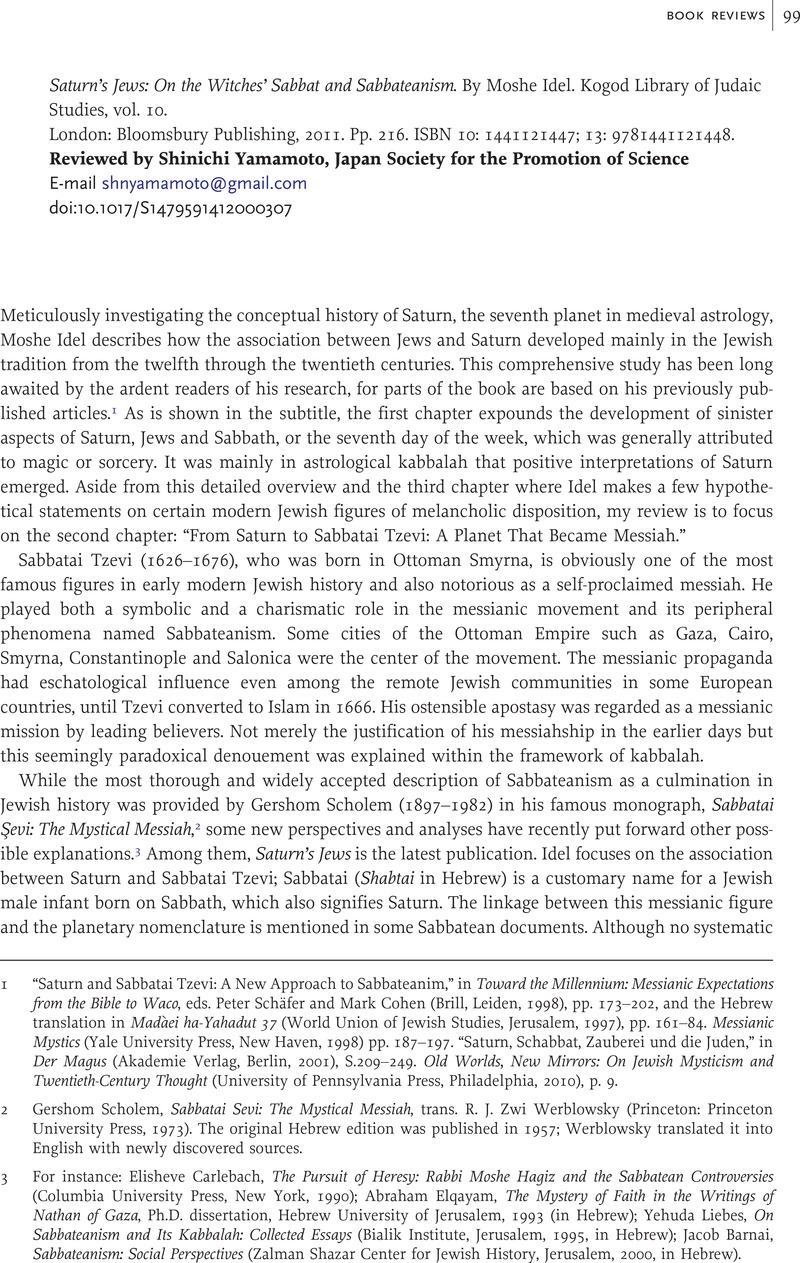No CrossRef data available.
Published online by Cambridge University Press: 18 January 2013

1 “Saturn and Sabbatai Tzevi: A New Approach to Sabbateanim,” in Toward the Millennium: Messianic Expectations from the Bible to Waco, eds. Schäfer, Peter and Cohen, Mark (Brill, Leiden, 1998), pp. 173–202Google Scholar, and the Hebrew translation in Madàei ha-Yahadut 37 (World Union of Jewish Studies, Jerusalem, 1997), pp. 161–84Google Scholar. Messianic Mystics (Yale University Press, New Haven, 1998) pp. 187–197Google Scholar. “Saturn, Schabbat, Zauberei und die Juden,” in Der Magus (Akademie Verlag, Berlin, 2001), S.209–249CrossRefGoogle Scholar. Old Worlds, New Mirrors: On Jewish Mysticism and Twentieth-Century Thought (University of Pennsylvania Press, Philadelphia, 2010), p. 9.Google Scholar
2 Scholem, Gershom, Sabbatai Sevi: The Mystical Messiah, trans. Werblowsky, R. J. Zwi (Princeton: Princeton University Press, 1973)Google Scholar. The original Hebrew edition was published in 1957; Werblowsky translated it into English with newly discovered sources.
3 For instance: Carlebach, Elisheve, The Pursuit of Heresy: Rabbi Moshe Hagiz and the Sabbatean Controversies (Columbia University Press, New York, 1990)Google Scholar; Abraham Elqayam, The Mystery of Faith in the Writings of Nathan of Gaza, Ph.D. dissertation, Hebrew University of Jerusalem, 1993 (in Hebrew); Liebes, Yehuda, On Sabbateanism and Its Kabbalah: Collected Essays (Bialik Institute, Jerusalem, 1995Google Scholar, in Hebrew); Barnai, Jacob, Sabbateanism: Social Perspectives (Zalman Shazar Center for Jewish History, Jerusalem, 2000Google Scholar, in Hebrew).
4 Scholem, Sabbatai Şevi: The Mystical Messiah, p. 161.
5 Galanté, Abraham, Nouveaux Documents sur Sabbetaï Sevi (Société Anonyme de Papeterie et d'Imprimerie, Istanbul, 1935), p. 52Google Scholar.
6 For example, Babylonian Talmud 119a.